Crocheting is a great hobby to take up, whether you’re looking for something to keep your hands busy or to make some extra money.
If you’re an avid crocheter, chances are you’ve experienced wrist or hand pain at some point. Carpal tunnel syndrome is the most common repetitive strain injury that affects people who crochet regularly. The compression of the median nerve in the wrist causes this condition.
The pain from this condition usually starts with numbness or tingling and pain in the hand.
This condition can be very painful and make the simple task of crocheting much more difficult and possibly even impossible without the help of a good crochet hook, namely ergonomic crochet hooks.
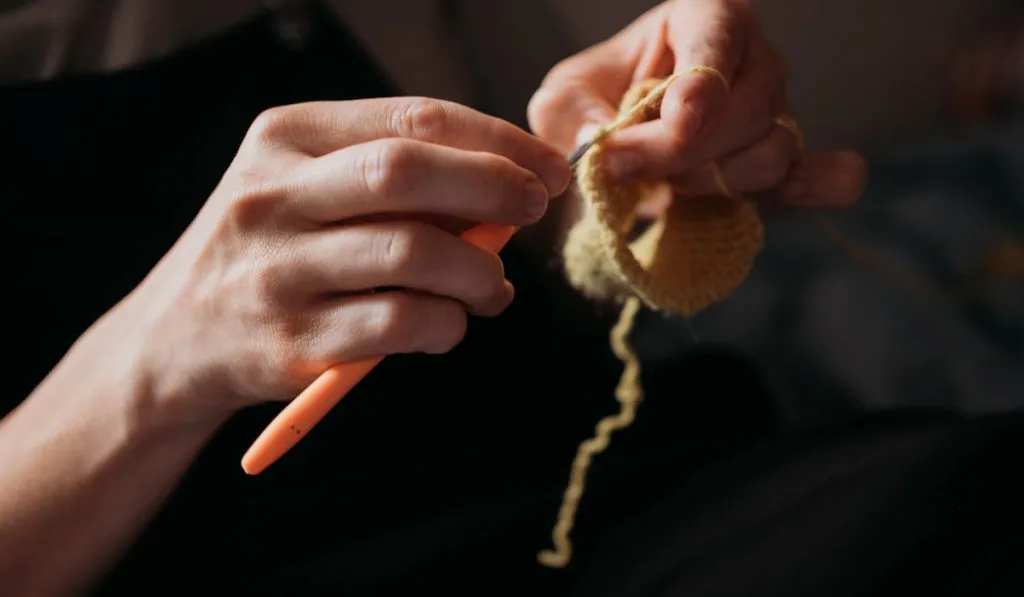
What Are Ergonomic Crochet Hooks?
Ergonomic crochet hooks have a design that makes them easier on your wrists and hands as you crochet. They often have an ergonomic grip that makes them easier to hold.
Some brands even have a cushioned base at the bottom, so there’s less strain on your hand when you hold it and use it to create stitches in your yarn project.
Top Ergonomic Crochet Hooks
Here are the best crochet hooks to use if you are suffering from carpal tunnel:
Clover Amour Crochet Hooks
Clover Amour crochet hooks are great for crocheters with hand and wrist problems. They have an ergonomic handle that fits comfortably in your hand. The hook handle is warm to the touch, which makes it more convenient for those suffering from carpal tunnel and arthritis.
Clover crochet hook is also lightweight which is easy on your hand. The hook is made of aluminum, which is an excellent material for crochet hooks because it’s smooth and doesn’t snag yarn, and you can crochet for longer.
The hooks come in different fun colors that make it easy to identify different hook sizes. The different colors help you remember which hook size you used last.
Pros
- They have a smooth shaft which means less resistance while crocheting
- Ergonomic handle that ensures you crochet for longer
- They are lightweight, which causes less strain on your hands
Cons
- Some crocheters have noted that the raised letters on the crochet hook cause blisters when holding in knife-hold
- The large handle size may be hard for beginners to manipulate
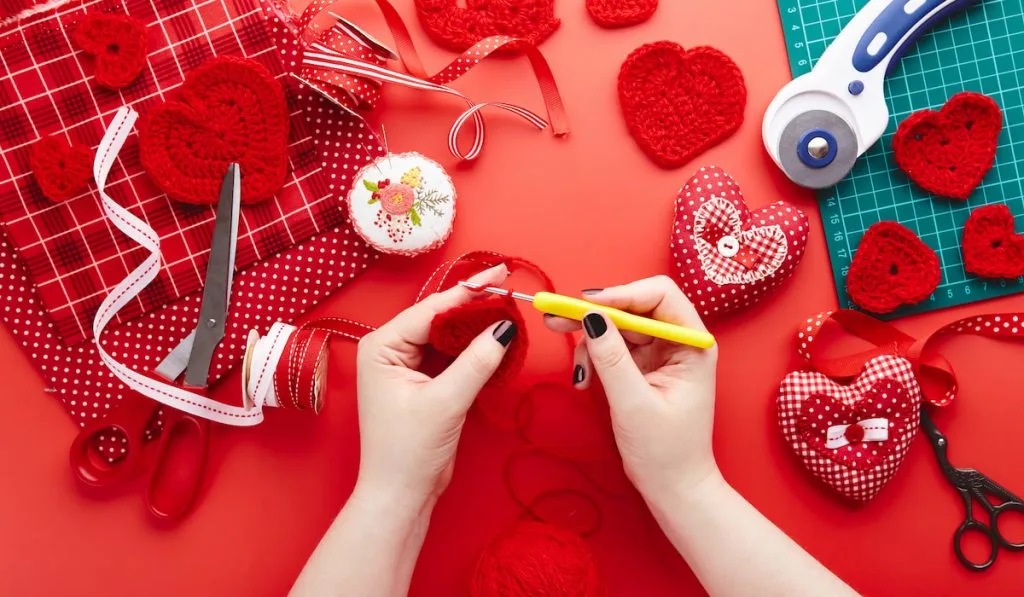
Addi Swing Crochet Hooks
Addi Swing crochet hooks have an ergonomic shape to provide crochet lovers with the needed natural grip for longer crocheting. The handle has a soft, colorful plastic and a firm white plastic which makes these hooks sturdy, flexible, and comfortable.
They also have different colors that represent different hook sizes. These color codes make it easier for you to find the right hook size for your project and to remember which hook you used last.
The hooks are tapered and have a nickel coating that makes it easy for yarn to glide as you crochet.
Pros
- Ergonomic design ensures less stress on your hands when crocheting
- The hooks measure about a centimeter more than other hooks, which means less chafing on your hands when you hold in knife hold
- It is smooth and catches yarn easily
Cons
- Some users found them heavy
- It has a shorter shaft that makes it hard to use on projects that require many loops on the hook at the same time
Athena Elements Crochet Hooks
These hooks are also a favorite to those who suffer from carpal tunnel and arthritis due to their ergonomic handles. The handles are made out of high-grade thermoplastic rubber that makes it easy to crochet for longer without pain.
Athena Elements crochet hooks have a longer length, making it easy for you to create multiple loops on the shaft. These hooks also make it easy to work with larger yarns as the hooks are up to 6 inches in length.
The hooks have a smooth finish that allows you to crochet without the yarn snagging, which means you get a clean finish on your projects without stress or frustrations.
Pros
- The needle is full length and does not slip off the ergonomic handle as it goes all the way to the bottom of the handle
- The handle is sturdy and non-slip, thus causing less tension to the hand
- It has a longer shaft that makes it easy to crochet patterns that require more loops
- They are great for Amigurumi projects that require tight stitches
- They come in all popular US sizes and letters, which means you don’t need to convert the sizes
Cons
- The handle may feel sticky at first
- They are inline and may be a turn off to those who prefer tapered hooks
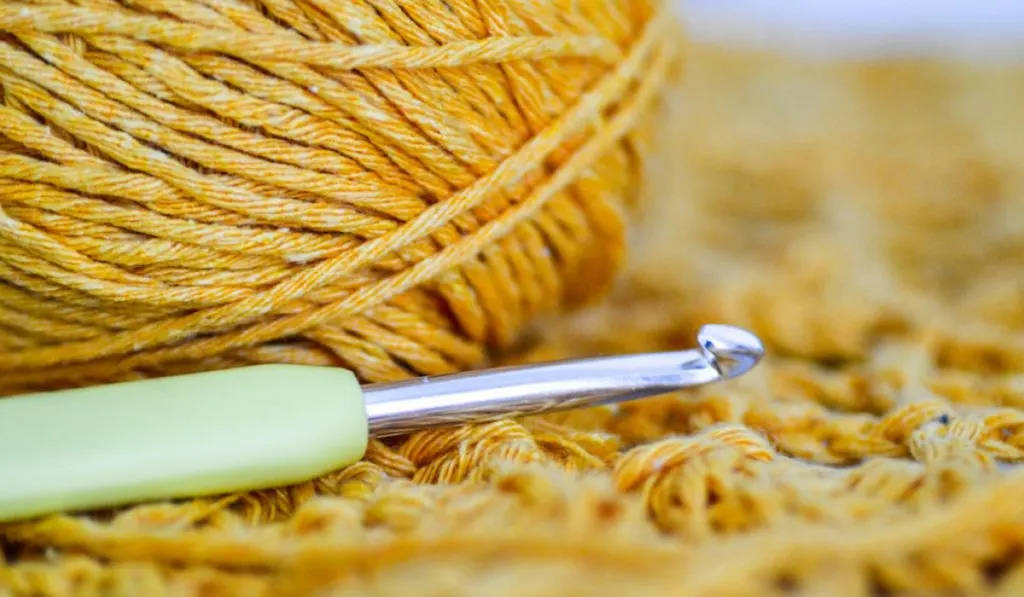
Furl’s Ergonomic Hooks
These hooks feature soft-grip handles that help relieve/eliminate pain in your hands, fingers, or wrist while crocheting. The handles have a comfortable handle that provides you with a firm grip so you can crochet for longer without pain.
The hooks are longer, so you can use them on projects that require several loops. The hook is also very smooth, so your yarn can glide without sticking, resulting in a uniform clean stitch.
The hooks are also color-coded for easier identification, with different sizes ranging from 2.0mm to 7.0mm.
Pros
- Great for beginner crocheters
- Pain-free crocheting for those suffering from carpal tunnel or arthritis
- Smooth hooks for smooth crocheting
- The hooks are longer to allow more loops
Cons
- You have to secure it to prevent it from rolling on flat surfaces, which results in breaking when it falls
- The head is shallow, making it hard to keep some yarns on it
Teamoy Ergonomic Crochet Hooks
Teamoy ergonomic crochet hooks are another great option for those suffering from arthritis or carpal tunnel. They are lightweight and thus cause no strain to your wrists and fingers when crocheting.
These hooks have soft rubber grip handles that reduce wrist, finger, and hand pains. They are beginner-friendly and are also perfect for experienced crocheters.
Teamoy crochet hooks have a smooth finish with no rough edges, ensuring you can crochet without the yarn snagging. The end is also sharp but not too sharp to prevent splitting the yarn. The sizes range from 2.0mm to 6.0mm.
Pros
- The hooks come in different colors and sizes for easier size identification
- Sizes are on the handle, thus making it easy to find the hook size you need
- The rubber grip is removable so that you can remove it if you find them uncomfortable
Cons
- Hooks are available in only nine sizes
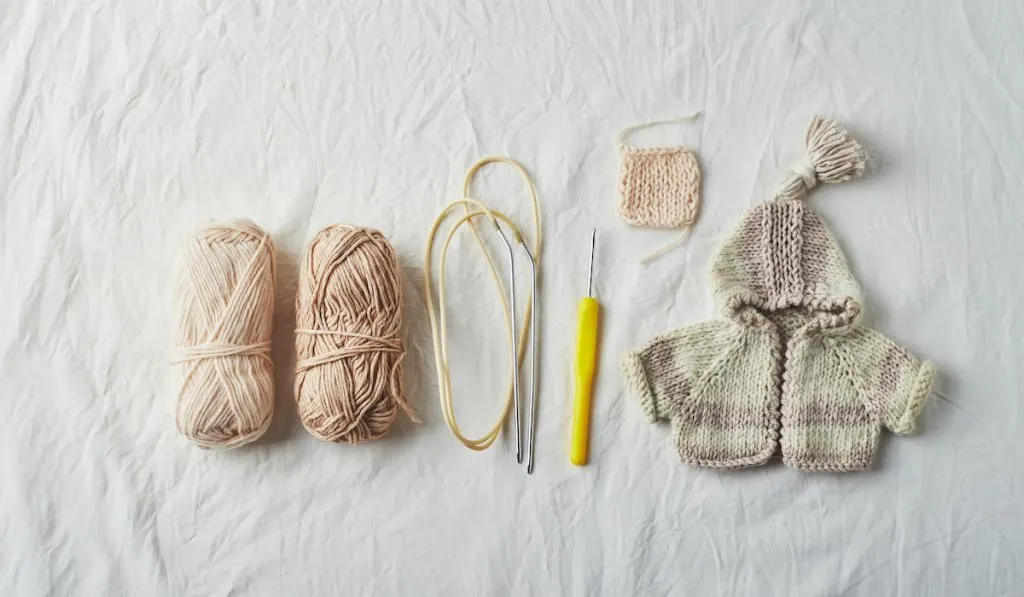
Boye Ergonomic Crochet Hooks
Boye crochet hooks are another great option for crocheters suffering from carpal tunnel syndrome. They have a smooth rounded head that ensures you don’t split the yarn when crocheting. The smooth finish also ensures a fine finish as the yarn won’t snag.
The handles also come in different colors for easier identification. They come from US size B(2.25mm) to N(10mm)
Pros
- Hooks have a soft rubber grip
- Hooks come in different sizes
- Color-coded handles
- Rounded head
Cons
- They are tapered and may not be a great choice for those who prefer inline hooks
How to Avoid Pain When Crocheting
Crocheting doesn’t worsen carpal tunnel syndrome. The repetitive motion of crocheting may help to strengthen your wrists. Crocheting is one of those activities that are often looked at as a form of physical therapy for the hands and wrists. Crocheting helps to improve dexterity and strengthen your hand muscles.
If you’re experiencing pain or discomfort in your wrists when crocheting, then it’s time to stop and take a look at what you’re doing wrong.
Here are some tips for avoiding pain when crocheting:
Alternate How You Hold Your Hook
How you hold the crochet hook can have an impact on whether you will feel pain when crocheting or not. Remember that crocheting involves repetitive motion (static motion) that can cause strain to your hands.
Change how you hold the hook. This means you shouldn’t favor one style over the other. If you crochet using a pencil hold, change to knife hold after a while. Changing your grip will give your muscles a break, and you can crochet for longer without hurting yourself.
It may not be easy to change how you hold your crochet. However, practicing different grips will help you get better.
Choose a Lighter Weight Yarn or Thread
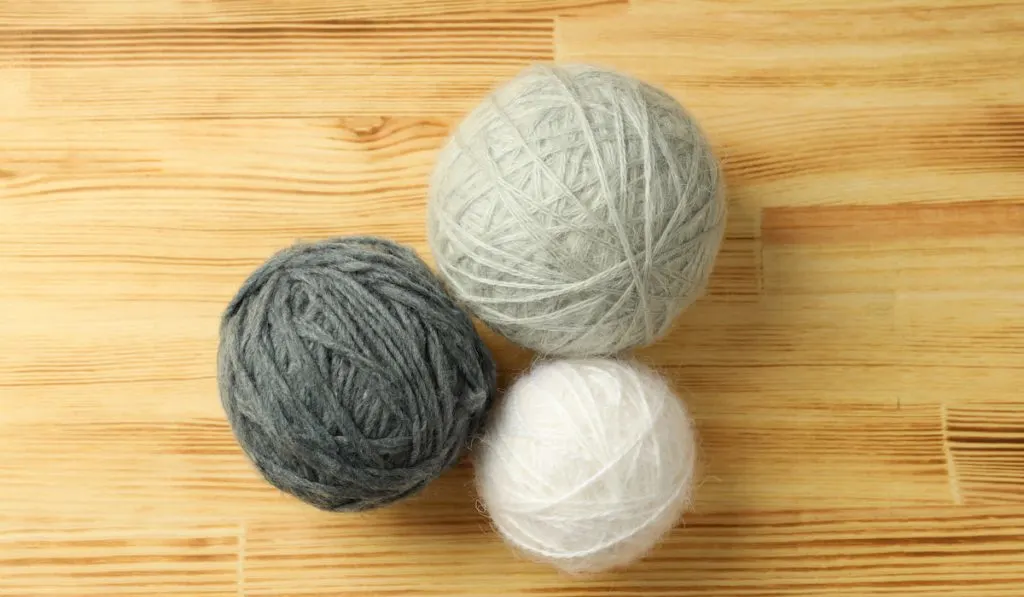
Lighter-weight yarn or thread is easier on the hands than heavier material. A thinner yarn will also require fewer stitches per inch, which means less work overall and less pain while crocheting. Thinner yarns will also allow you to get more done faster because it doesn’t take as long to stitch each row together as it does when using thicker material.
Use a Hook With a Soft Grip
The first thing to consider is whether or not you need a soft grip on your crochet hook. Some people find that a hard plastic or metal handle causes them discomfort after prolonged use, while others find that they can hold onto their hooks without any trouble at all.
You can purchase crochet hooks with handles at crafts stores or make your own handles using polymer clay or by wrapping rubber bands on your hooks.
Use Ergonomic Crochet Hooks
Ergonomic handles provide better comfort for people with arthritis and carpal tunnel syndrome. They allow you to place the needle in such a way that it doesn’t put as much stress on your wrist.
Make sure the handle fits in your hand well since an ill-fitting handle can also cause pain and discomfort. A good way to test if a handle fits is by trying it out at your local craft store.
If possible, buy from a shop that lets you return products so you can try out different hooks until you find the ones that fit you the best.
Wear Supportive Gloves
Wear special supportive gloves that promote good circulation in your hands and wrists. These can give extra support to your hand muscles while you’re working and may help with circulation issues that come from repeated movement such as tingling in the fingers or coldness in the hands when crocheting for long periods of time.
Keep Hands Warm
Keep your hands warm while crocheting with gloves or mittens. Use a warm compress if your hands get cold.
Stretch Your Hands
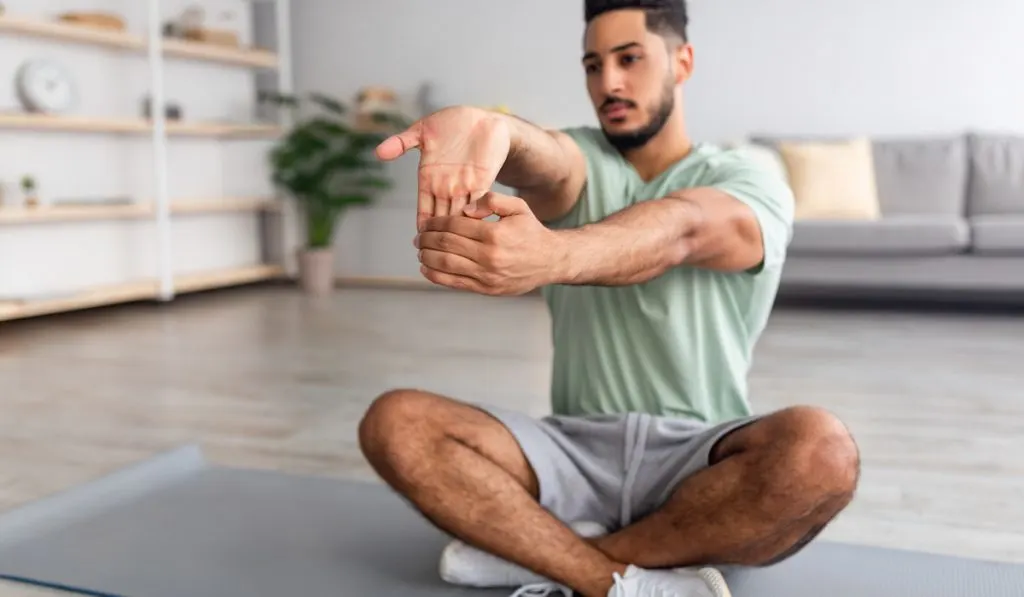
Do wrist and hand stretching exercises every day to increase flexibility. Hold each stretch for at least 30 seconds and repeat each stretch several times throughout the day.
Take Frequent Breaks
Take frequent breaks while crocheting to give your hands rest time between projects. Take breaks after some minutes of crocheting. If possible, put down your crochet hook and try another activity for a while to break up the project. This will ensure you rest your hands and thus prevent pain when crocheting.
Use a Larger Hook Size
Larger hook sizes put less stress on your muscles and joints because they require fewer stitches per inch. For example, an H hook would make a thicker stitch than a D hook, so you wouldn’t have to make as many stitches per row.
Massage Your Wrist Joints
Massaging your wrist joints will help get blood flowing and break micro adhesions in your wrist to drain excess fluid from the wrist joint, thus relieving pain. Get a partner to massage your wrist twice daily as a massage therapy like myofascial release massage requires the use of two hands.

How to Choose a Crochet Hook
There are many different types of hooks available in the market, so it can be hard to choose one which will suit you best. There are a few factors that you must consider before choosing a crochet hook for yourself:
- The material of the hook
- The size of the hook
- The type of handle
Material
There are different materials that make crochet hooks. These include plastic, wood, and steel. There is no right or wrong material to choose from when it comes to crochet hooks. However, different materials have a different feel and finish when crocheting.
- Steel crochet hooks have a smooth finish that makes it easy for yarn to glide while crocheting.
- Plastic hooks also have a smooth finish, but some may drag yarn. They are lighter than steel crochet hooks but tend to break when they fall.
- Wood crochet hooks are great options as they are naturally flexible. They are also comfortable, and you can buff them to be smooth, so they don’t strain fibers and your hands as you crochet. However, they may break when they fall on the floor.
The Size of the Hooks
The size of the hook determines how big or small your stitches will be. The larger the hook, the bigger the stitches, and the smaller the hook size, the smaller the stitches.
Shape
Crochet hooks come in two different shapes: Inline and tapered hooks. Inline hooks have pointy heads that are on the same plane as the shaft.
Tapered crochet hooks have a rounded head a small throat, and the head is not on the same plane as the shaft.
You may need to try both the inline and tapered hooks to see which works best for you.
Key Takeaway
When you are suffering from carpal tunnel, it is best to stop using crochet hooks without ergonomic handles and purchase hooks that will offer you tension-free crocheting.
When you take a rest, massage your hands, then use compression gloves and ergonomic hooks. This way you will continue enjoying crocheting and you will finish more projects.
